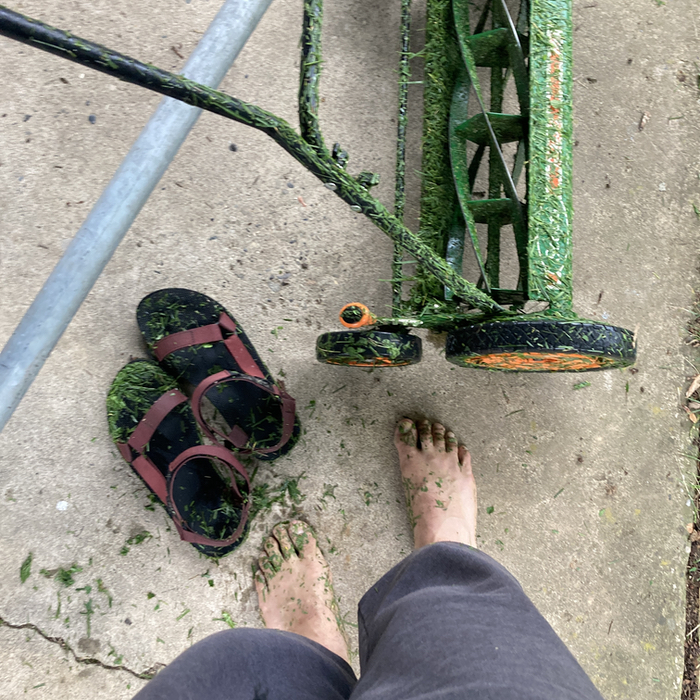How does a podcast serving millions still make each listener feel personally connected?
Discover why “connection, not perfection” became the north star for one of the world’s most-listened-to language shows.
[Do you ever freak-out thinking about 200,000 people listening?] I think that our vision of the human connection is still so strong inside me, that I think about that. I think about that listener who might feel isolated right now because of language. They’re either living in the US and they’re struggling to get connected in their community, or they’re on a call from Japan to New York and they’re cringing because they think they just said the wrong thing and they’re not building the business relationship.
~ Lindsay McMahon (19:00)
This conversation with Lindsay McMahon explores the strategic structure and guiding values behind one of the most successful podcasts for English language learners. Lindsay discusses how the show’s consistency in structure, length, and tone builds trust and supports learning. The format was intentionally designed from the beginning, and every episode follows a clear template. The recurring message, “connection, not perfection,” drives the brand and resonates deeply with listeners around the world. The show targets global English learners, particularly professionals, and publishes five days a week, delivering a sense of reliability and approachability.
Lindsay shares her team-building strategy, including how co-hosts are hired, trained, and retained. She emphasizes treating podcasting as a business (for example, offering benefits like 401(k) matching), which contributes to long-term team cohesion. The show’s monetization model is also discussed, covering courses, sponsorships, licensing, and Apple+ subscriptions. The team uses lead magnets (like quizzes), and consistent calls to action are embedded in every episode. Additional topics include burnout, managing production buffers, and ambitions to expand into live events and podcast coaching.
Takeaways
Designing a consistent episode format — A deliberate structure supports language learning and creates a predictable listener experience.
“Connection, not perfection” as a guiding principle — Prioritizing human connection over grammatical precision challenges traditional language instruction.
Podcasting as a business, not a hobby — Hiring co-hosts as paid team members ensures accountability and long-term consistency.
Lead magnets drive engagement — Quizzes are particularly effective at converting listeners into email subscribers.
Outlining instead of scripting — Episodes are outlined with teaching goals but intentionally unscripted to maintain spontaneity.
Batch recording and long buffers — Maintaining a three-week content buffer ensures uninterrupted delivery despite emergencies.
Burnout isn’t hypothetical — High-stress periods, like losing a team member, can lead to physical consequences and force reevaluation.
Team chemistry matters — Rapport between co-hosts is essential and carefully considered during hiring.
Being contrarian creates distinction — Challenging industry norms, like overemphasis on perfection, helps define a unique brand identity.
Listener-first thinking — Constant attention is paid to whether the listener is engaged and whether the show is truly serving their needs.
Video is a distribution channel, not a core product — Repurposing podcast audio for YouTube helps reach wider audiences without diluting focus.
Podcasting isn’t the business — The podcast functions as the top of a funnel for a multifaceted language education company.
Seasons don’t make sense for some formats — A continuous delivery model supports learners’ expectations and needs.
In-person events are powerful but resource-heavy — Listener meetups provide deep engagement but require significant logistics.
Launching early provided advantage — Entering the English-as-second-language podcast market in 2013 gave a head start with less competition.
Resources
All Ears English — Main site for the language-learning podcast and its related offerings.
All Ears English YouTube Channel — Video recordings of podcast episodes for additional reach.
Apple Podcasts: All Ears English — To listen, but also if you want to see what they’re doing with Apple+ subscriptions and how that shows up in the Apple player.
Business English from All Ears English — One of the brand’s additional podcasts focused on business-specific English learning.
IELTS Energy Podcast — Show for students preparing for the IELTS exam, also under the All Ears English brand.
OptinMonster — Tool mentioned for generating email opt-ins from website traffic.
Podcast Movement — Mentioned as the location (at the 2024 event in London) of recent discussions on the future of video in podcasting.
(Written with help from Chat-GPT.)
ɕ
